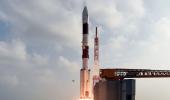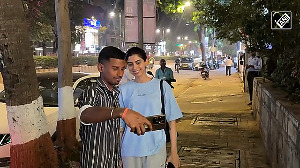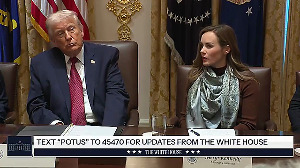Indian Institute of Astrophysics on Thursday handed over to Indian Space Research Organisation, the Visible Line Emission Coronagraph, the primary payload on board Aditya-L1, which is India's first dedicated scientific mission to study the Sun, to be launched by June or July.

The handing over ceremony was held in the presence of the ISRO Chairman S Somanath at the Centre for Research and Education in Science and Technology campus of IIA near in Bengaluru.
IIA said it has successfully finished assembling, testing and calibrating the VELC, which is the largest and one of the most technically challenging of the seven payloads/telescopes that will fly on Aditya-L1, at its CREST campus.
ISRO will now conduct further testing of VELC and its eventual integration with the Aditya-L1 spacecraft, it said in a release.
Congratulating the VELC team, Somanath said the launch of Aditya-L1 is expected to be around June or July.
He said, "Understanding the effect of the Sun on Earth and its surroundings has become very important now and Aditya-L1 aims to shed light on this topic. It has taken 15 years for VELC from concept to completion, and this period was needed for a complex system like this. The VELC has been the finest collaboration between IIA and ISRO"
Aditya L1 is the first space-based Indian mission to study the Sun from a halo orbit around the Lagrangian point 1 (L 1) of the Sun-Earth system.
This mission with seven payloads on board to observe the photosphere, chromosphere and the outermost layers of the Sun (the corona) will provide greater advantage of observing the solar activities and its effect on space weather, according to officials of Indian Space Research Organisation.
Noting that ISRO aims to play an important role in future science experiments in space and an ecosystem needs to be created for this, including a roadmap for the next few decades, Somnath said ISRO encourages Indian scientists to come up with new and novel ideas for future space science instruments that have not been done before by others in the world.
"Many students tell me that they want to become astrophysicists and institutes like IIA should further enhance their efforts to explain their work to the public," he said.
IIA director Prof Annapurni Subramaniam, who released the official logo of the VELC payload, said VELC is a team effort and is a major milestone for the institute. The effort has involved close collaboration between IIA, ISRO and many industries across India. We look forward to exciting science results coming from this payload after it is operational."
The space solar mission was initially conceived as Aditya-1 with a 400 kg class satellite carrying one payload (VELC), and was planned to be launched in an 800 km low earth orbit.
Since a satellite placed in a halo orbit around the L1 of the Sun-Earth system has the major advantage of continuously viewing the Sun without any occultation/eclipses, the mission was revised to Aditya-L1, and it would now be inserted in a halo orbit around the L1, which is 1.5 million km from the Earth towards the Sun.
The other six payloads are: Solar Ultraviolet Imaging Telescope, Aditya Solar Wind Particle Experiment, Plasma Analyser Package for Aditya, Solar Low Energy X-ray Spectrometer, High Energy L1 Orbiting X-ray Spectrometer, and Magnetometer
The scientific studies by the satellite will enhance our current understanding of the Solar Corona and also provide vital data for space weather studies", ISRO officials said.
The Principal Investigator of the VELC payload, Prof Raghavendra Prasad explained that no other solar coronagraph in space has the ability to image the solar corona as close to the solar disk as VELC can.
"It can image it as close as 1.05 times the solar radius. It can also do imaging, spectroscopy and polarimetry at the same time, and can take observations at a very high resolution (level of detail) and many times a second," he said, adding that this capability will revolutionise solar astronomy around the world and the data is expected to answer many outstanding problems in the field.
Former chairman of ISRO A S Kiran Kumar said, VELC is not a trivial piece of engineering and it has taken 15 years to produce such a complex system.
"This augurs well for future space missions and I look forward to more such novel space science missions in the future."










